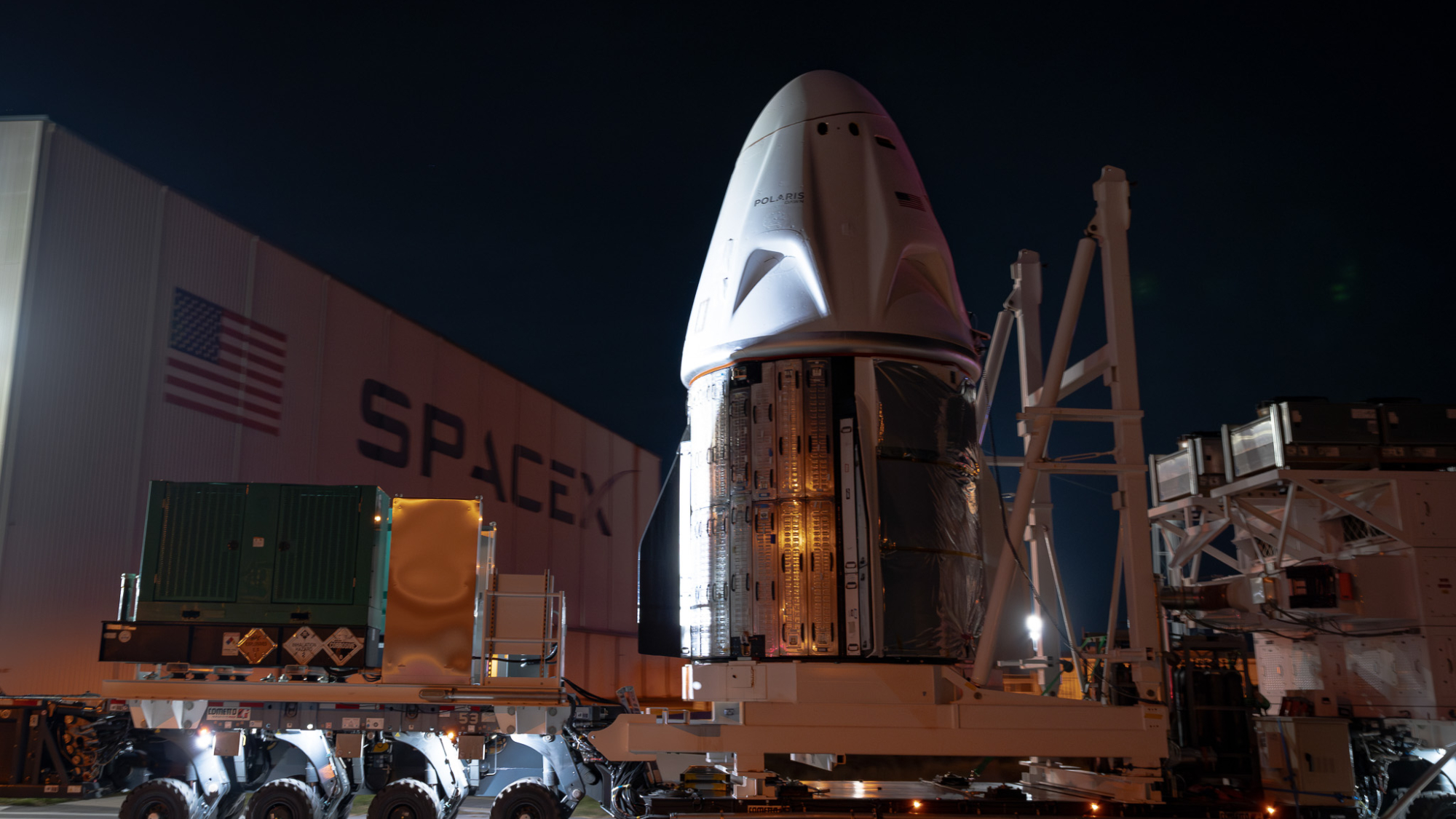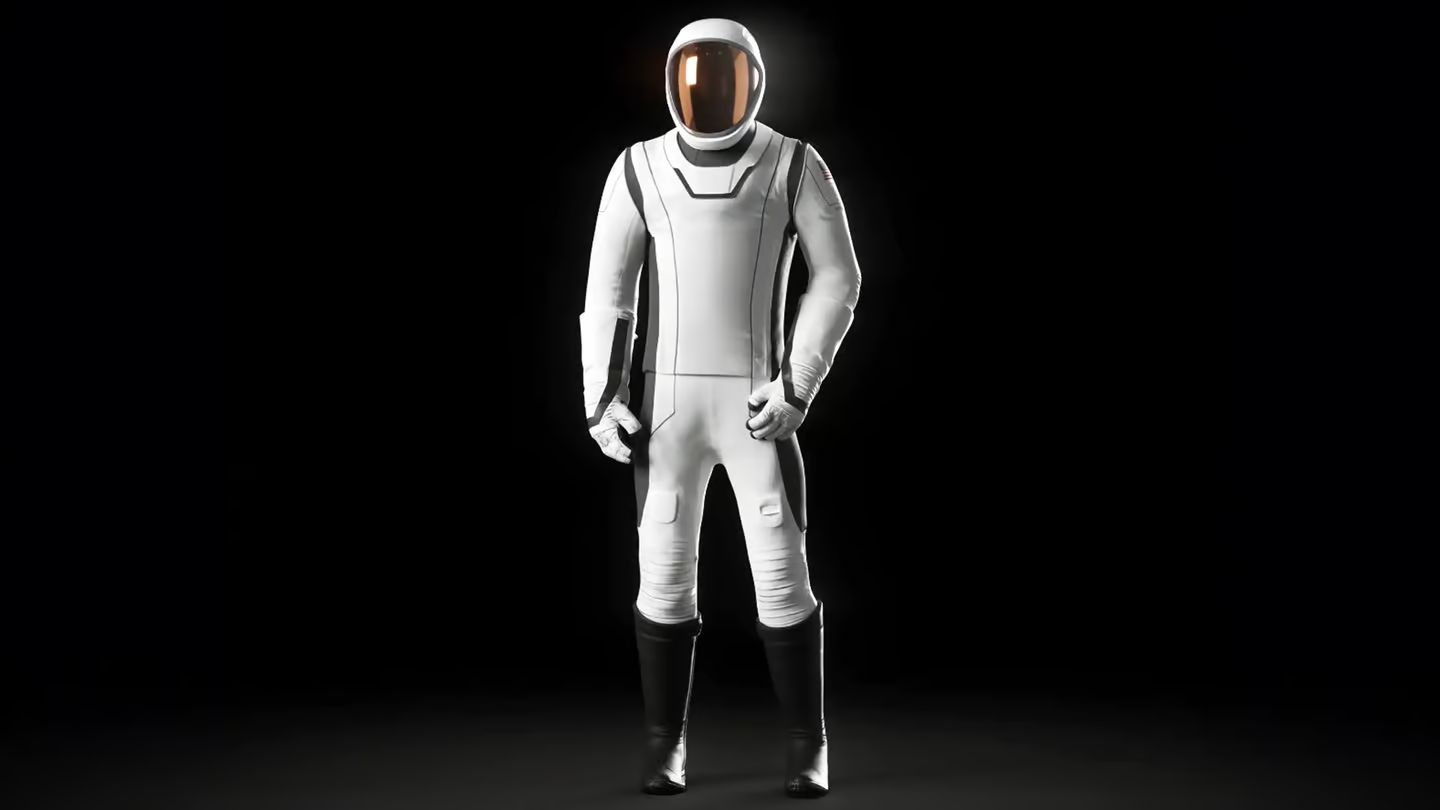SpaceX delays launch of Polaris Dawn private spacewalk mission to Aug. 27
SpaceX's private Polaris Dawn mission will wait one more day for launch.

Update for 11 p.m. ET on Aug. 27: SpaceX has now delayed the Polaris Dawn launch until no earlier than Aug. 30 due to a helium leak and bad weather. Read our delay stories here and here.
The crew for SpaceX's next astronaut mission will wait one extra day before launching to space.
SpaceX's Polaris Dawn mission — the first in history to feature a private spacewalk —was slated for Monday, Aug. 26, but will now launch no earlier than Tuesday, Aug. 27. The shift comes two days after the Polaris Dawn crew arrived in Florida for the final leg of their pre-mission preparations.
The delay was announced Wednesday night (Aug. 21), in a post by SpaceX on X, formerly twitter, accompanied by a a mission preview video highlighting the crew, modified Dragon spacecraft, and SpaceX's new extravehicular activity (EVA) spacesuits.
"The new date allows additional time for teams to complete preflight checkouts ahead of next week’s launch," SpaceX wrote in a follow-up post, specifying the reason for the 24-hour schedule change.
The mission will lift-off from Launch Complex-39A, at NASA's Kennedy Space Center, in Florida, on a SpaceX Falcon 9 rocket. Polaris Dawn's four-hour launch window opens Tuesday morning (Aug. 27) at 3:38 a.m. EDT (0738 GMT), and will kickoff a five-day mission that will include the first-ever spacewalk conducted by private astronauts.
Polaris Dawn is funded by U.S. billionaire philanthropist Jared Isaacman, who is serving as mission commander. Dawn will be the second crewed mission payed for by Isaacman, and his second trip to space. His first mission, Inspiration4, launched the first all-civilian in 2021, and helped raise $250 million in donations for St. Jude Children's Research Hospital in Memphis, Tennessee.
Breaking space news, the latest updates on rocket launches, skywatching events and more!
Dawn serves as the first of three planned launches for Isaacman's Polaris Program, all of which aim to further the private exploration of space and expand the scientific research of life in microgravity, as well as continuing to raise money for Saint Jude Children's Research Hospital. For this mission, Isaacman is joined by retired United States Air Force (USAF) Lieutenant Colonel Scott "Kidd" Poteet, serving as mission pilot, as well as mission specialists Sarah Gillis and Anna Menon. Gillis and Menon both work as Lead Space Operations Engineers at SpaceX, and will be the first of the company's employees to launch to space.
The crew will launch into a highly eliptical orbit, and quickly raise their altitude to about 870 miles (1,400 kilometers), where they will complete a number of science experiements. At this distance, the Polaris Dawn crew will be farther from Earth than anyone has flown since the Apollo missions ended in 1972 — making Menon and Gillis the first women in history to fly so far.
The Polaris Dawn crew will also undertake another historic first: the first all-civilian spacewalk. Dawn was originally slated to launch in 2022, but was repeatedly delayed as SpaceX developed and tested its new EVA suit and modified the interior of the mission's Dragon capsule for exposure to the vacuum of space.
Testing SpaceX's EVA suit is Polaris Dawn's most critical experiement, and will take place on the third day of the mission. Visually, the spacesuit appears similar to SpaceX's IVA (intravehicular activity) suits, which are worn only inside the spacecraft. Opening Dragon's hatch to expose the cabin and its occupants to the harsh environment of space meant redesigning the spacecraft's interior and upgrading the spacesuits with an enhanced thermal management system that uses additional insulative materials, as well as a new coating on the visor of the suit's helmet.
In total, the spacewalk is scheduled to last two hours, from cabin depressurization through repressurization, with two of the Polaris Dawn crew exiting the spacecraft entirely. The mission will wrap up two days later, with a parachute splashdown in one of a handful of potential landing zones off the coast of Florida.
The next two launches in the Polaris manifest have yet to coalesce any tangible mission goals or framework. However, Isaacman has voiced interest in providing maintenance or support for some of NASA's legacy missions already in orbit such as the Hubble Space Telescope, and has stated his intent for the third Polaris mission to be the first crewed launch of SpaceX's Starship spacecraft.

Josh Dinner is the Staff Writer for Spaceflight at Space.com. He is a writer and photographer with a passion for science and space exploration, and has been working the space beat since 2016. Josh has covered the evolution of NASA's commercial spaceflight partnerships and crewed missions from the Space Coast, as well as NASA science missions and more. He also enjoys building 1:144-scale model rockets and human-flown spacecraft. Find some of Josh's launch photography on Instagram and his website, and follow him on X, where he mostly posts in haiku.



